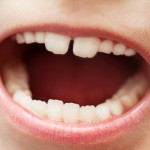
Caries is the world’s most prevalent disease and the majority of lesions in adolescents and adults occur in the proximal surfaces of teeth. Traditional treatment was invasive using rotary and or hand instruments to remove caries followed by restoration. New non-invasive treatment included biofilm control via mechanical removal of plaque, antibacterial treatments) or remineralisation treatments and ‘microinvasive’ approaches which condition the tooth surface with organic acids prior to treating the caries lesion followed by sealing or resin infiltration.
The aim of this Cochrane review was to evaluate the effects of micro-invasive treatments for managing proximal caries lesions in primary and permanent dentition in children and adults.
Methods
Searches were conducted in the Cochrane Oral Health Group Trials Register, the Cochrane Central Register of Controlled Trials (CENTRAL), Medline, Embase, LILACs, Virtual Health Library, Web of Science Conference Proceedings, ZETOC Conference Proceedings, Proquest Dissertations and Theses, ClinicalTrials.gov, OpenGrey the World Health Organization (WHO) International Clinical Trials and the metaRegister of Controlled Trials. No language or date restrictions were applied.
Randomised controlled trials (RCTs) of at least six months’ duration comparing micro-invasive treatments for managing non-cavitated proximal dental decay in primary teeth, permanent teeth or both, against non-invasive measures, invasive means, no intervention or placebo were considered.
Two reviewers independently screened the studies and carried out a risk of bias assessment using the Cochrane tool. 3 reviewers abstracted data independently. Standard Cochrane approaches were used to synthesise the data and meta-analyses were conducted using a the random-effects model, and the Becker-Balagtas method to calculate the odds ratio (OR) for lesion progression
Results
- 8 trials involving a total of 365 patients were included.
- All trials used a split-mouth design.
- 7 studies were considered to be at high risk of bias – mainly due to lack of blinding of personnel and patients.
- Meta-analysis, showed that micro-invasive treatment significantly reduced the odds of lesion progression compared with non-invasive treatment (e.g fluoride varnish) or oral hygiene advice (e.g to floss) (OR 0.24, 95% CI 0.14 to 0.41; 602 lesions; seven studies; I2 = 32%). There was no evidence of subgroup differences (P = 0.36).
- No adverse events were reported.
- The quality of evidence for micro-invasive treatments was assessed as moderate.
Conclusions
The authors concluded:
The available evidence shows that micro-invasive treatment of proximal caries lesions arrests non-cavitated enamel and initial dentinal lesions (limited to outer third of dentine, based on radiograph) and is significantly more effective than non-invasive professional treatment (e.g. fluoride varnish) or advice (e.g. to floss). We can be moderately confident that further research is unlikely to substantially change the estimate of effect. Due to the small number of studies, it does remain unclear which micro-invasive technique offers the greatest benefit, or whether the effects of micro-invasive treatment confer greater or lesser benefit according to different clinical or patient considerations.
Comments
Conventional sealing of pits and fissure to prevent caries has been shown to be highly effective (Ahovuo-Saloranta et al 2013 ) and these new micro-invasive techniques can be seen as modifications of the technique for application to proximal surfaces. While this review demonstrates that the two main techniques can significantly reduce the likelihood of caries progression there is not sufficient evidence at the moment to determine which individual technique is best. However the evidence is sufficient to show that these new methods are more effective than other non-invasive treatments.
Links
Primary paper
Dorri M, Dunne SM, Walsh T, Schwendicke F. Micro-invasive interventions for managing proximal dental decay in primary and permanent teeth. Cochrane Database of Systematic Reviews 2015, Issue 11. Art. No.: CD010431. DOI: 10.1002/14651858.CD010431.pub2.
Other references
Ahovuo-Saloranta A, Forss H, Walsh T, Hiiri A, Nordblad A, Mäkelä M, Worthington HV. Sealants for preventing dental decay in the permanent teeth. Cochrane Database Syst Rev. 2013 Mar 28;3:CD001830. doi: 10.1002/14651858.CD001830.pub4. Review. PubMed PMID: 23543512.

Micro-invasive treatments can slow caries progression https://t.co/fehxbS4LgC
Micro-invasive treatment significantly reduced the odds of caries progression https://t.co/fehxbS4LgC
Non-cavitated enamel and initial dentinal lesions arrested by micro-invasive treatment https://t.co/fehxbS4LgC
Micro-invasive treatment significantly more effective than non-invasive professional treatment https://t.co/fehxbS4LgC
Don’t miss – Micro-invasive treatments can slow caries progression https://t.co/fehxbS4LgC
This review is of particular importance as provides evidence for the effectiveness of micro-invasive approaches in managing non-cavitated proximal dental lesions. However, as discussed in the review all the included RCTs only compared micro-invasive approaches with non-invasive treatments, e.g. home dental care, fluoride varnish.
Dentists routinely use conventional methods (drill and fill) in managing non-cavitated proximal lesions extended into dentin. There is currently no evidence as to which approach (Micro-invasive or Conventional) is more effective. Micro-invasive approach may be more favourable for patients/dentists, as it is less destructive, more patient friendly (no need for local anaesthetics and drilling). Further research is required to compare micro-invasive and invasive (conventional) approaches for managing non-cavitated lesions.